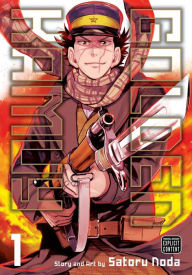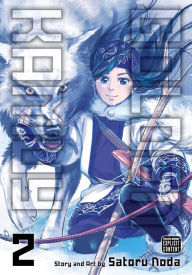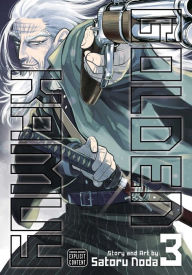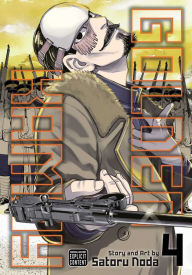8 Reasons to Go on a Manga Treasure Hunt with Golden Kamuy
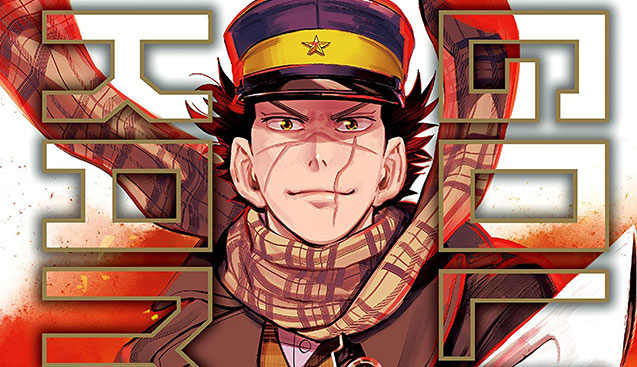 We declared Golden Kamuy one of the best new manga of 2017, and we’re not the only ones feeling it: Satoru Noda’s frontier adventure manga won a 2016 Manga Taisho award, honoring outstanding new series, and an anime adaptation debuts next month in Japan.
We declared Golden Kamuy one of the best new manga of 2017, and we’re not the only ones feeling it: Satoru Noda’s frontier adventure manga won a 2016 Manga Taisho award, honoring outstanding new series, and an anime adaptation debuts next month in Japan.
Following Saichi “Immortal” Sugimoto, a veteran of the Russo-Japanese War who learns of a hidden cache of Ainu gold hidden in Hokkaido, Golden Kamuy offers wilderness survival, sharpshooting, prison breaks, and enormous bears. Still not convinced? Here are eight compelling reasons to make Golden Kamuy your next read.
Golden Kamuy, Vol. 1
Golden Kamuy, Vol. 1
By Satoru Noda
In Stock Online
Paperback $14.99
X Marks the Spot
The central plot of Golden Kamuy is a hunt for a buried hoard of gold belonging to the Ainu, an indigenous people native to northern Japan, which takes the characters all over early twentieth-century Hokkaido—through prison cells, Ainu kotan (settlements), company towns, and across the barren wilderness. Oh, but did I mention? The X isn’t marked on any old pirate map. It’s tattooed on human skin—to be exact, on the skin of 24 escaped prisoners now scattered all over Hokkaido, to be exact. Find the map (all of it), find the treasure.
X Marks the Spot
The central plot of Golden Kamuy is a hunt for a buried hoard of gold belonging to the Ainu, an indigenous people native to northern Japan, which takes the characters all over early twentieth-century Hokkaido—through prison cells, Ainu kotan (settlements), company towns, and across the barren wilderness. Oh, but did I mention? The X isn’t marked on any old pirate map. It’s tattooed on human skin—to be exact, on the skin of 24 escaped prisoners now scattered all over Hokkaido, to be exact. Find the map (all of it), find the treasure.
Golden Kamuy, Vol. 2
Golden Kamuy, Vol. 2
By Satoru Noda
In Stock Online
Paperback $14.99
The Dynamic Duo
The Immortal Saichi Sugimoto, a veteran of war, and Asirpa, an Ainu girl, are the protagonists, and they make a truly awesome pair. Sure, one of them is a seasoned soldier and the other is a 12-year-old girl, but that doesn’t stop them from forming a pretty adorable older brother/younger sister bond that gets them through most crises they encounter. Sugimoto never looks down on Asirpa even though she’s a kid—she’s a badass, and she’s saved his life more than once. The mutual trust and respect that grows between these two as they increasingly come to rely on each other is one of the most heartwarming aspects of the series.
The Factions
Of course, Sugimoto and Asirpa aren’t the only ones looking for the gold—they’ve got competition. Lieutenant Tsurumi is the biggest threat to Sugimoto’s group, and he’s got an army of lunatics to back him up. Also coming for the treasure is famed demon vice-commander of the Shinsengumi, Toshizo Hijikata, whose historical death Noda has conveniently retconned. Then there are all the other weirdos Sugimoto and his gang encounter on their search. Like Yoshihiro Togashi (Hunter x Hunter), Noda has a knack for creating villains who are awful people—serial killers, thieves, conmen, you name it—and then convincing the reader to like them in spite of it all. You find yourself thinking, “maybe they’re not so bad, after all”—but trust me, they are.
The Dynamic Duo
The Immortal Saichi Sugimoto, a veteran of war, and Asirpa, an Ainu girl, are the protagonists, and they make a truly awesome pair. Sure, one of them is a seasoned soldier and the other is a 12-year-old girl, but that doesn’t stop them from forming a pretty adorable older brother/younger sister bond that gets them through most crises they encounter. Sugimoto never looks down on Asirpa even though she’s a kid—she’s a badass, and she’s saved his life more than once. The mutual trust and respect that grows between these two as they increasingly come to rely on each other is one of the most heartwarming aspects of the series.
The Factions
Of course, Sugimoto and Asirpa aren’t the only ones looking for the gold—they’ve got competition. Lieutenant Tsurumi is the biggest threat to Sugimoto’s group, and he’s got an army of lunatics to back him up. Also coming for the treasure is famed demon vice-commander of the Shinsengumi, Toshizo Hijikata, whose historical death Noda has conveniently retconned. Then there are all the other weirdos Sugimoto and his gang encounter on their search. Like Yoshihiro Togashi (Hunter x Hunter), Noda has a knack for creating villains who are awful people—serial killers, thieves, conmen, you name it—and then convincing the reader to like them in spite of it all. You find yourself thinking, “maybe they’re not so bad, after all”—but trust me, they are.
Golden Kamuy, Vol. 3
Golden Kamuy, Vol. 3
By Satoru Noda
In Stock Online
Paperback $12.99
Casual Cultural Anthropology
Have you ever wanted to know more about the native peoples and ecology of northern Japan? Good news: after reading Golden Kamuy, you will be an expert on these topics and more. Golden Kamuy is set at the tail end of the Meiji Era, a time of huge cultural shifts in Japan as a whole, and the changing landscape of Hokkaido, both physical and cultural, is a significant backdrop to Noda’s story. The manga is peppered with informational asides about the plants, animals, and general history of the region, as well as its indigenous people, the Ainu (who were being forcibly assimilated by the Japanese government during this period). Noda works with a Ainu language expert to get the language and cultural practices right, so expect to learn some Ainu vocabulary along the way.
The Food (Hinna Hinna)
You might not know this, but Golden Kamuy is secretly a food manga. You can’t wander around the Hokkaido wilderness without stopping for lunch, and Sugimoto and Asirpa like to dine Bear Grylls-style, on whatever they can catch or gather. This leads to some pretty fascinating meals—salted brain, anyone?—and more opportunities for learning about the landscape of Hokkaido and the Ainu who call it home. The food Asirpa cooks is a window to her culture, and meals in the manga become sites of exchange and camaraderie, as well as an opportunity for comedy as Sugimoto & Co. try to choke down whatever Asirpa has whipped up out of deer intestines. Despite any initial reservations they may have, most of the characters are eventually forced to admit that her food is hinna (delicious)!
Casual Cultural Anthropology
Have you ever wanted to know more about the native peoples and ecology of northern Japan? Good news: after reading Golden Kamuy, you will be an expert on these topics and more. Golden Kamuy is set at the tail end of the Meiji Era, a time of huge cultural shifts in Japan as a whole, and the changing landscape of Hokkaido, both physical and cultural, is a significant backdrop to Noda’s story. The manga is peppered with informational asides about the plants, animals, and general history of the region, as well as its indigenous people, the Ainu (who were being forcibly assimilated by the Japanese government during this period). Noda works with a Ainu language expert to get the language and cultural practices right, so expect to learn some Ainu vocabulary along the way.
The Food (Hinna Hinna)
You might not know this, but Golden Kamuy is secretly a food manga. You can’t wander around the Hokkaido wilderness without stopping for lunch, and Sugimoto and Asirpa like to dine Bear Grylls-style, on whatever they can catch or gather. This leads to some pretty fascinating meals—salted brain, anyone?—and more opportunities for learning about the landscape of Hokkaido and the Ainu who call it home. The food Asirpa cooks is a window to her culture, and meals in the manga become sites of exchange and camaraderie, as well as an opportunity for comedy as Sugimoto & Co. try to choke down whatever Asirpa has whipped up out of deer intestines. Despite any initial reservations they may have, most of the characters are eventually forced to admit that her food is hinna (delicious)!
Golden Kamuy, Vol. 4
Golden Kamuy, Vol. 4
By Satoru Noda
In Stock Online
Paperback $12.99
Historical Easter Eggs
If the presence of ahistorical Shinsengumi weren’t enough for you history nerds, Noda’s got plenty more historical trivia to thrill you. Many of the characters in Golden Kamuy, from Shinpachi Nagakura down to humble prison wardens, are based on real historical figures of the time, some of whom were actually at large in Hokkaido during the early twentieth century. Other historical details also fascinate—the human-caused extinction of the Hokkaido wolf, for example, which Noda casually slips in near the beginning of the manga. And if you’ve got a thing for period weaponry? Welcome to bayonet heaven.
War Is Hell
If there’s one thing many of the characters in Golden Kamuy share, it’s that they’re all completely messed up by their time in the army. Sugimoto really has no business staying in Hokkaido, but can’t seem to bring himself to go home to a family who can’t understand the horrors he experienced in the Russo-Japanese War. Embarking on an insane treasure hunt with a bunch of strangers seems an eminently better option. Other characters have similar stories—Lieutenant Tsurumi, for example, took a piece of shrapnel to the skull, resulting in his somewhat grotesque mask, permanent crazy eyes, and general unfitness for civilian company. The intense violence in Golden Kamuy serves a purpose here—Sugimoto isn’t nicknamed “Immortal” because he’s been lucky. The things he will do to survive, the things he has done, are brutal, and it’s changed him.
Historical Easter Eggs
If the presence of ahistorical Shinsengumi weren’t enough for you history nerds, Noda’s got plenty more historical trivia to thrill you. Many of the characters in Golden Kamuy, from Shinpachi Nagakura down to humble prison wardens, are based on real historical figures of the time, some of whom were actually at large in Hokkaido during the early twentieth century. Other historical details also fascinate—the human-caused extinction of the Hokkaido wolf, for example, which Noda casually slips in near the beginning of the manga. And if you’ve got a thing for period weaponry? Welcome to bayonet heaven.
War Is Hell
If there’s one thing many of the characters in Golden Kamuy share, it’s that they’re all completely messed up by their time in the army. Sugimoto really has no business staying in Hokkaido, but can’t seem to bring himself to go home to a family who can’t understand the horrors he experienced in the Russo-Japanese War. Embarking on an insane treasure hunt with a bunch of strangers seems an eminently better option. Other characters have similar stories—Lieutenant Tsurumi, for example, took a piece of shrapnel to the skull, resulting in his somewhat grotesque mask, permanent crazy eyes, and general unfitness for civilian company. The intense violence in Golden Kamuy serves a purpose here—Sugimoto isn’t nicknamed “Immortal” because he’s been lucky. The things he will do to survive, the things he has done, are brutal, and it’s changed him.
Golden Kamuy, Vol. 5
Golden Kamuy, Vol. 5
By Satoru Noda
In Stock Online
Paperback $12.99
The Comic Relief
You know a manga is classy when it has a running joke about how miso looks like poop. The thing is, Noda has a deft hand with tone, and the (often scatalogical) humor effectively balances out a lot of the darkness in this series, which, after all, contains serial murderers, the extinction of cute animals, and people getting eviscerated with bayonets. The character of Shiraishi (who is a worthwhile reason to read the manga in and of himself) is a prime example of this: He’s a total gag character whose main occupation is keeping things from getting too heavy, a job he does exceedingly well. Golden Kamuy is funnier than it has any right to be, and excels at turning the mood around on a dime to get a quick laugh in between bear maulings.
The Comic Relief
You know a manga is classy when it has a running joke about how miso looks like poop. The thing is, Noda has a deft hand with tone, and the (often scatalogical) humor effectively balances out a lot of the darkness in this series, which, after all, contains serial murderers, the extinction of cute animals, and people getting eviscerated with bayonets. The character of Shiraishi (who is a worthwhile reason to read the manga in and of himself) is a prime example of this: He’s a total gag character whose main occupation is keeping things from getting too heavy, a job he does exceedingly well. Golden Kamuy is funnier than it has any right to be, and excels at turning the mood around on a dime to get a quick laugh in between bear maulings.
Have you discovered the treasure that is Golden Kamuy?
